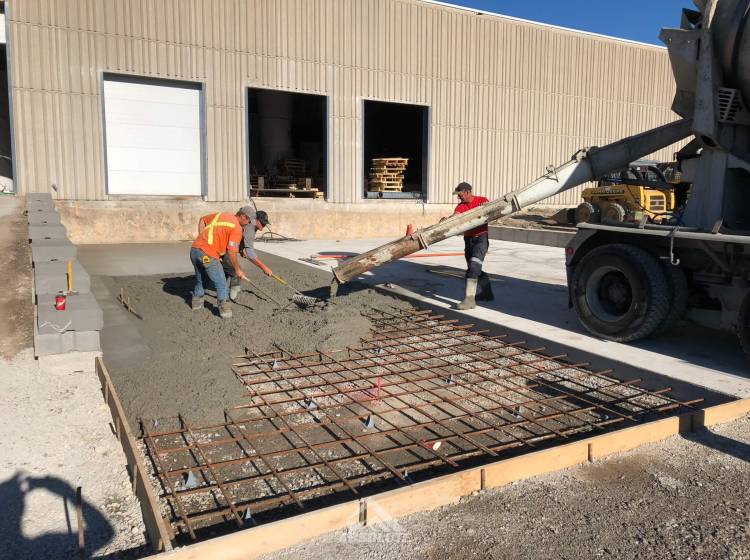


The foundation of success in construction—literally—lies in well-executed concrete works. In modern industrial construction, concrete is not just a material; it serves as the main load-bearing element and structural backbone of the entire building. If concrete works are poorly executed in any project, the superstructure—whether a metal frame or a complex system—can lose its integrity. That’s why every stage, from geological and topographic surveys to concrete pouring phases, requires a highly technical and professional approach.
The process begins with a geological and topographic investigation of the site. Soil type, load-bearing capacity, groundwater level, and terrain conditions are identified. Based on this data, excavation and foundation works are planned: digging is done at the proper depth and width, followed by soil stabilization and drainage procedures.
Next, the concrete formwork is assembled. These molds define the shape of the structure and ensure the proper flow, finish, and dimensions of the concrete in a fixed position. In large-scale industrial construction, metal formwork systems are often used due to their precision, high durability, and reusability.
Once the formwork is in place, the reinforcement binding phase begins. This is where the reinforced concrete system is structured. The amount, orientation, and spacing of the reinforcement bars are calculated based on static engineering principles. This skeletal framework enhances the load-bearing capacity of the concrete and prevents cracking.
Then come the concrete pouring stages. Concrete is poured in layers, each compacted using vibration tools to eliminate air pockets. This process improves both surface quality and structural strength. During industrial concrete pouring, temperature and humidity levels are considered, and specialized mixes and techniques are applied. Quality control at this phase is critical to ensure high-performance concrete pouring.
As the concrete enters the curing phase, preparations for the future installation of the metal structure are made. This is called anchoring in construction, and if not executed properly, the stability of the entire superstructure may be at risk.
In practice, anchoring is done as follows: threaded ends (pre-tensioned anchor heads) are attached to reinforcement bars at the planned fixing points, and these are secured with precision before the concrete is cast. Once poured, these anchor points are embedded firmly within the concrete. After full curing, metal frame components are aligned with these anchors and mounted using heavy-duty bolted connections. Welding is not used here—instead, detachable bolt systems are applied for safety and ease of future maintenance or modification.
Ultimately, concrete work is not just a phase—it’s the true foundation that determines the success of the entire project. Real reliability in construction is hidden within what’s not visible: the foundation that supports everything. Concrete is not just a material—it is what breathes life into the structure, carries the load, and withstands time. If this foundation is weak, even the most expensive metal structure will fail in its function.
If you are planning a durable, technologically sound, and trustworthy system for an industrial or large-scale project, every stage—from soil investigation to the final anchoring point and integration with the metal structure—must be performed at a professional level.
At Metalico, we don’t just pour concrete—we build stability, trust, and endurance.
Your project is our responsibility.